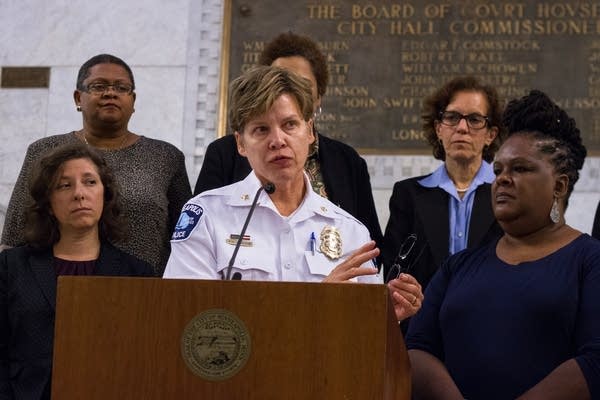Report maps Minneapolis sex trafficking market

Go Deeper.
Create an account or log in to save stories.
Like this?
Thanks for liking this story! We have added it to a list of your favorite stories.
Girls who are victims of sex trafficking in Minneapolis disproportionately come from poor neighborhoods and are people of color, according to a new report.
Researchers from the University of Minnesota's Urban Research Outreach-Engagement Center and Othayonih Research, in cooperation with the Women's Foundation of Minnesota, have analyzed the locations of victims, pimps and buyers and tracked how and where victims were recruited and sold.
Data came from Minneapolis police reports and Hennepin County Court records from January 2008 to October 2013 and interviews with 89 adults who work in law enforcement, health care or youth advocacy. The study indentified 79 victims, 50 "facilitators" (pimps, enforcers, guards, transporters) and 23 sex buyers.
Native American girls are especially at risk, but often aren't recognized, said Suzanne Koepplinger, a longtime advocate for Native American girls and women.
Turn Up Your Support
MPR News helps you turn down the noise and build shared understanding. Turn up your support for this public resource and keep trusted journalism accessible to all.
"They may show up in the system looking like 'bad kids.' They lie to you, they're afraid, they've been traumatized. But they've been damaged," she said. "But they've adapted in the only way they know how--which is to survive by their wits."

Koepplinger said 75 percent of juvenile trafficking cases in Minneapolis in 2013 involved Native American victims, although Native Americans make up only 2 percent of the city's population.
Several cases showed pimps targeted vulnerable and special-needs girls in the Minneapolis public schools. One pimp even enrolled an adult woman so she could recruit underage classmates.
Deputy police chief Kris Arneson said she was struck by how many times girls abused by sex traffickers came into contact with public agencies but weren't recognized as victims.
"All of my officers are going to have access to this because I want them to know what's happening out there," Arneson said. "The officers are the ones who see these young girls out on the street. They're the school resource officers who are coming into contact with these girls in the schools so we have to know what we're seeing."
A third of the victims in the Minneapolis police cases were runaways.
Lauren Martin, one of two lead researchers, emphasized that the report is not about numbers and prevalence, but an attempt to detect patterns and contours of the market.

"These operations work to develop a supply of girls and bring them to market," she said. "We found that the market is driven by sex-buyers' preferences and priorities. So when we pan back to see the full picture, we see sex-buyers driving the market."
• Download and read the full report
Key findings
• Girls ranged in age from 9 to 17.
• The average age of a trafficked girl in the study was 15.
• Roughly one third of the victims in MPD cases were runaways. Other risk factors included homelessness, drug/alcohol use, past child abuse or neglect, and being a pregnant or parenting teen.
• Pimps and victims generally came from high-poverty neighborhoods and were disproportionately people of color.
• Recruitment locations were primarily clustered in downtown Minneapolis, the Phillips Neighborhood of South Minneapolis, and in North Minneapolis.
• Recruitment happened at schools, libraries, juvenile detention centers, parks, public transit, shelters, malls and abandoned buildings.
• Recruiting tactics included "lover-boy pimping" (alternating affection, psychological manipulation, and violence), peer recruiting, rape and gang rape.
• Four different business models serve different segments of the market: Escort services, brothels, street prositition and closed sex buyers' networks--where buyers and pimps work closely together and are the most difficult for law enforcement to detect.
• Buyers came from across the metro area and include men of all races, though the largest percentage were white.
• Sex transactions primarily occurred at buyers' homes, hotels in the Minneapolis suburbs and in cars.
Download and read the full report:


